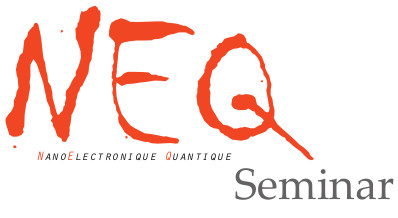- Home
- Institut Néel
- Research teams
- Technical Groups & Services
- Work at the Institut
- Partnerships

Abstract: The electronic structure of organic molecules can be efficiently tailored through a rational design of molecular size, shape, and atomic structure of the edges. Simple geometrical considerations can also give rise to magnetism in organic molecules. As opposed to the localized nature of magnetic moments in transition metal atoms, unpaired electrons in organic molecules reside in delocalized molecular orbitals, which promotes efficient, tunable, and robust intermolecular magnetic coupling. Combining rational design principles with on-surface chemistry, I will show the generation and characterization of magnetism in individual polyaromatic hydrocarbons by scanning probe microscopy 1, 2. I will further demonstrate the bottom-up fabrication of molecular S = 1 antiferromagnetic quantum spin chains 3. Herein, a systematic study of length-dependent magnetic excitations in both open-ended and cyclic spin chains reveal gapped spin excitations in the bulk, with the gap saturating for sufficiently long spin chains, and fractional S = 1/2 edge states at the chain termini, which manifest as Kondo resonances. It will be shown that these spectral features ratify Haldane’s conjecture for integer-spin antiferromagnetic chains 4, 5, which has not been conclusively demonstrated in experiments. Lastly, I will move toward the study of magnetic molecules on insulating surfaces. Here, the tip-induced synthesis of an elusive organic molecule, namely indeno[1,2-a]fluorene, will be demonstrated on ultrathin insulating NaCl films on (111) coinage metal surfaces 6. The molecule exhibits ground state bistability, wherein it can be stabilized either in a magnetic or a non-magnetic state, and can be switched between the two states simply by changing its adsorption site on NaCl.
References : – 1 S. Mishra et al. Nature Nanotechnology 15, 22–28 (2020) -2 S. Mishra et al. Nature Chemistry 13, 581–586 (2021)- 3 S. Mishra et al. Nature 598, 287–292 (2021) -4 F. D. M. Haldane, Physical Review Letters 50, 1153–1156 (1983) – 5 I. Affleck et al. Physical Review Letters 59, 799–802 (1987) 6 S. Mishra et al. Nature Chemistry (2023, in press).
